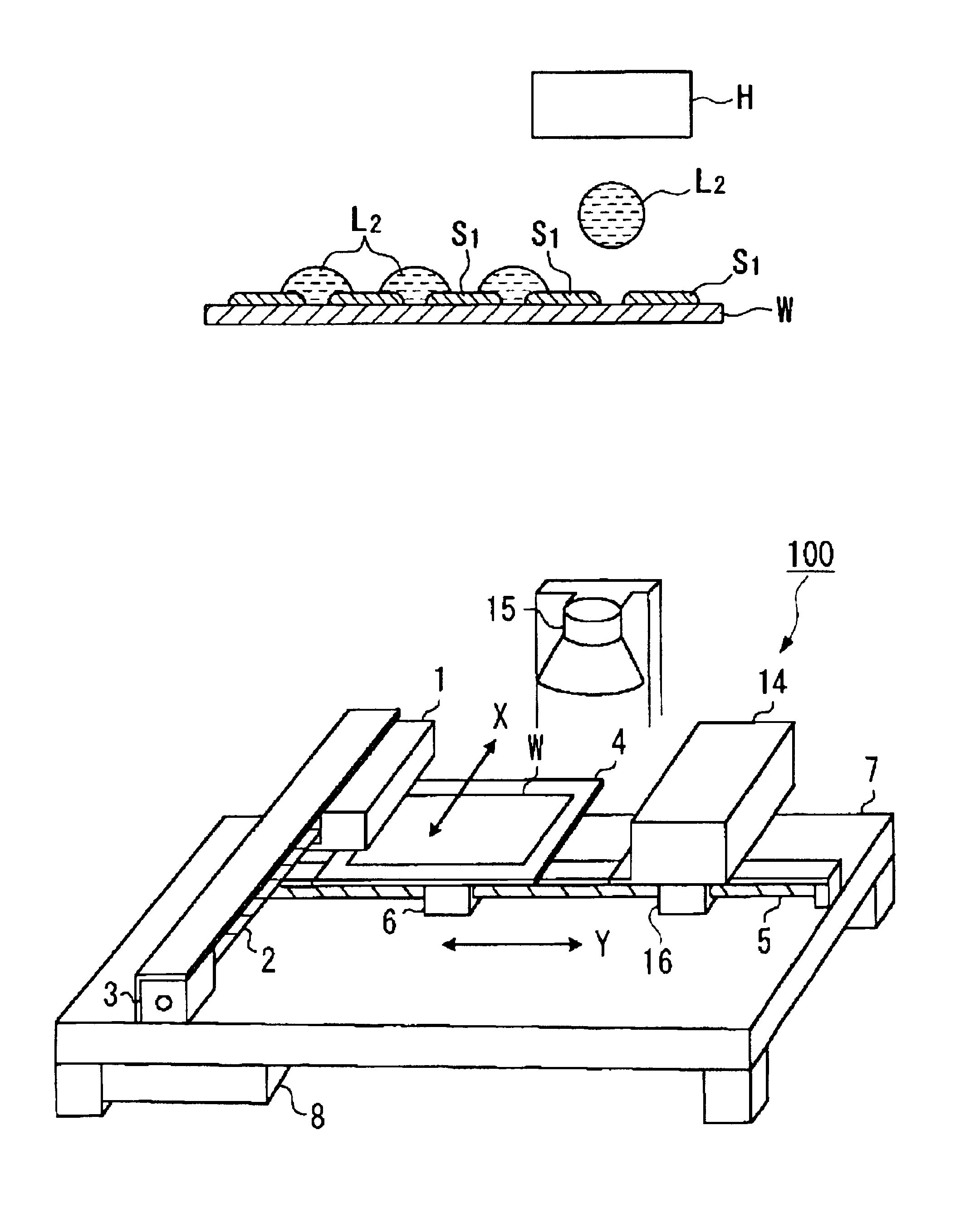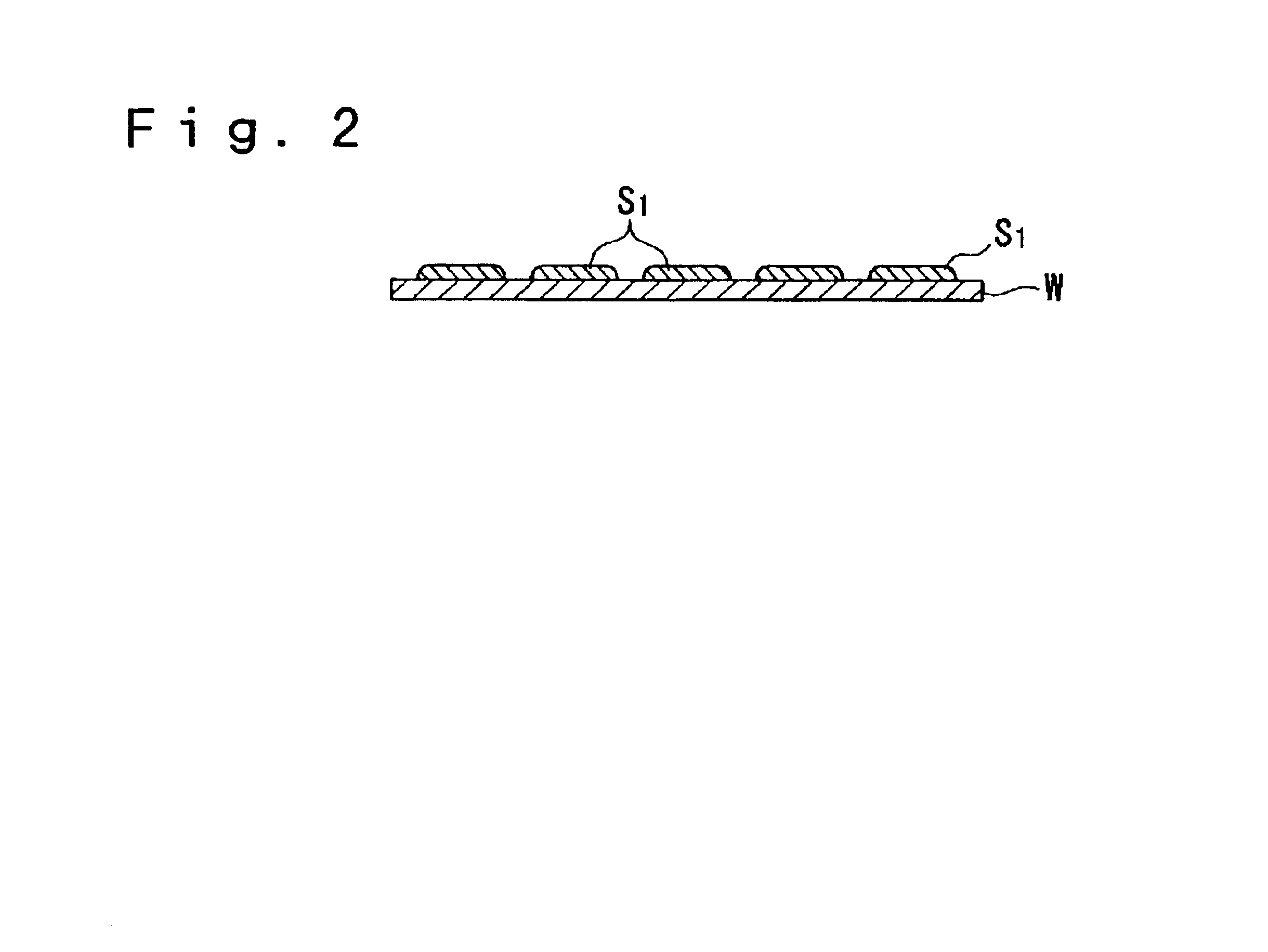Apparatus and methods for forming film pattern
a technology of film pattern and pattern, applied in the direction of forming conductive pattern, inking apparatus, superconductor device, etc., to achieve the effect of reducing line width, simple steps, and efficient film thickness
- Summary
- Abstract
- Description
- Claims
- Application Information
AI Technical Summary
Benefits of technology
Problems solved by technology
Method used
Image
Examples
first embodiment
[0085]As the first embodiment, a method for forming a wiring, which is an example of the method for forming a film pattern of the present invention, will be described. The method for forming a wiring according to the present embodiment is composed of a surface treatment step, a discharging step, and a heat treatment / optical treatment step. Among them, the discharging step is composed of a dispersion preparation step, the first discharging step, the second discharging step, and the third discharging step. Each step will be described below.
[0086]Various materials, such as Si wafers, quartz glass, glass, plastic films, and metal plates, can be used as a substrate on which a conductive film wiring is to be formed. Those in which semiconductor films, metal films, dielectric films, organic films, and the like, are formed as substrate layers on the surfaces of these various material substrates may be used as the substrate on which the conductive film wiring is to be formed.
[0087]The surfac...
third embodiment
[0162]As the third embodiment, a method for forming a silicon film pattern, which is an example of the method for forming a film pattern of the present invention, will be described. The method for forming a silicon film pattern according to the present embodiment is composed of a surface treatment step, a discharging step, and a heat treatment / optical treatment step. Among them, the discharging step is composed of a solution preparation step, the first discharging step, the second discharging step, and the third discharging step. Each step will be described below.
[0163]Various materials, for example, Si wafers, quartz glass, glass, plastic films, and metal plates, can be used as a substrate on which a silicon thin film pattern is to be formed. Those in which semiconductor films, metal films, dielectric films, organic films, etc., are formed as substrate layers on the surfaces of these various material substrates may be used as the substrate on which the silicon thin film pattern is ...
fourth embodiment
[0190]As the fourth embodiment, a liquid crystal device, which is an example of the electro-optic apparatus of the present invention, will be described. FIG. 8 is a diagram showing a two-dimensional layout of signal electrodes, etc., on a first substrate of the liquid crystal device according to the present embodiment. The liquid crystal device according to the present embodiment is roughly composed of this first substrate, a second substrate (not shown in the drawing) provided with scanning electrodes, etc., and a liquid crystal (not shown in the drawing) injected between the first substrate and the second substrate.
[0191]As shown in FIG. 8, a plurality of signal electrodes 310 . . . are installed in the shape of a multiplex matrix in a pixel region 303 on the first substrate 300. In particular, each of the signal electrodes 310 . . . is composed of a plurality of pixel electrode portions 310a . . . installed corresponding to individual pixels and signal wirings 310b . . . connecti...
PUM
 Login to View More
Login to View More Abstract
Description
Claims
Application Information
 Login to View More
Login to View More - R&D
- Intellectual Property
- Life Sciences
- Materials
- Tech Scout
- Unparalleled Data Quality
- Higher Quality Content
- 60% Fewer Hallucinations
Browse by: Latest US Patents, China's latest patents, Technical Efficacy Thesaurus, Application Domain, Technology Topic, Popular Technical Reports.
© 2025 PatSnap. All rights reserved.Legal|Privacy policy|Modern Slavery Act Transparency Statement|Sitemap|About US| Contact US: help@patsnap.com



